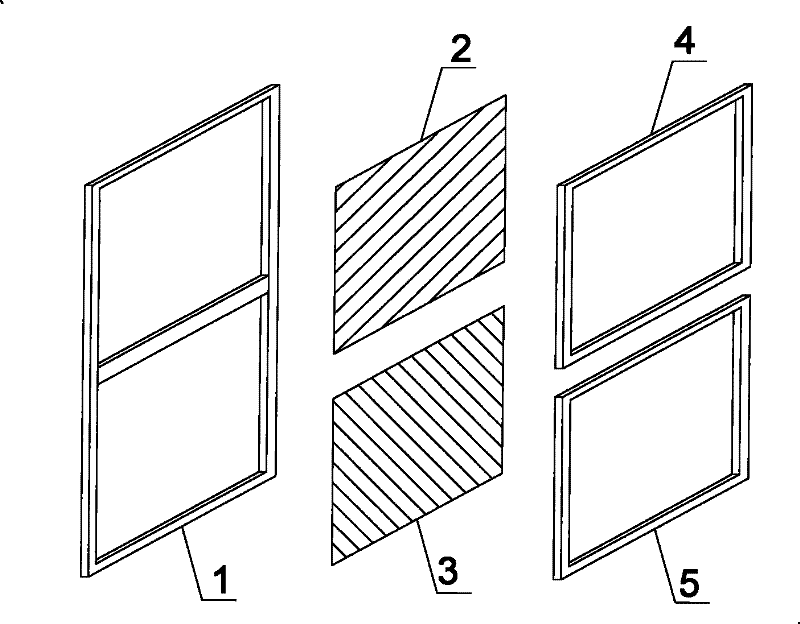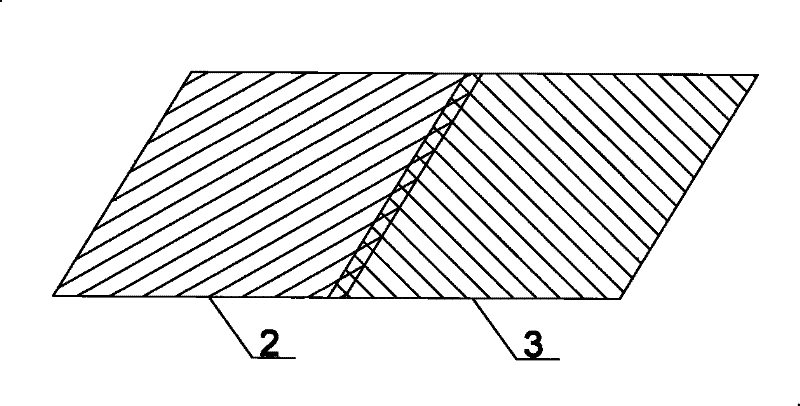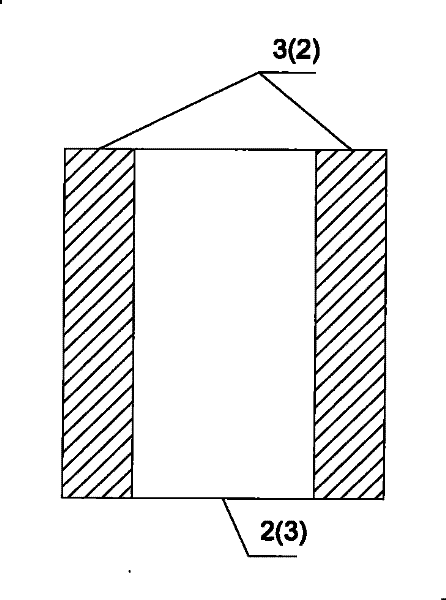Ion-exchange membrane for liquid flow energy-storing batteries, and liquid flow energy-storing battery pack
A liquid flow energy storage battery and ion exchange membrane technology, which is applied to battery pack components, fuel cell grouping, secondary batteries, etc., can solve the problems of battery pack charge and discharge capacity attenuation, increase equipment investment, and reduce battery pack efficiency , to prevent mutual migration, increase the number of charge and discharge cycles, and maintain the effect of charge and discharge capacity
- Summary
- Abstract
- Description
- Claims
- Application Information
AI Technical Summary
Problems solved by technology
Method used
Image
Examples
Embodiment 1
[0038] according to Figure 4 A battery pack with a rated power of 1.1 kilowatts is assembled from the single cells of the structure shown. The battery pack is composed of 15 single cells in electrical series, in which the ion exchange membrane has figure 1 The ion-exchange membrane with split structure shown has an effective area ratio of 6:1, and the ion-exchange membrane is integrated with the base frame and the fixed frame by thermal bonding. The charging and discharging method of the battery pack adopts constant current mode, the input and output current is 52 amperes, the output voltage range of the battery pack is 0-25 volts, the electrolyte uses 1.5 mol / liter of vanadium ion solution, and the supporting electrolyte is 3 mol / liter of sulfuric acid solution, the positive and negative electrolyte volumes are 20 liters.
[0039] The energy efficiency of the battery pack is 83%, and the efficiency of the entire battery system is 71%. The initial charging capacity of the ba...
Embodiment 2
[0041] Using the same battery pack as in Example 1, the difference is that the ion-exchange membrane, the base frame and the fixed frame are combined by solvent bonding, the energy efficiency of the battery pack is 82.5%, and the efficiency of the entire battery system is 71%. After the battery pack runs 500 charge-discharge cycles, its charging capacity decays from 48 amp hours to 45.6 amp hours, and the decay rate is less than 5%. 19.6 liters, the total concentration of vanadium ions in the positive and negative electrolytes changed from the original 1.4997 mol / L and 1.4964 mol / L to 1.4885 mol / L and 1.5026 mol / L, and the energy efficiency of the battery pack was 80%. The battery system efficiency is 70%.
Embodiment 3
[0043] Adopt the battery pack identical with embodiment 1, difference is, the ion-exchange membrane of each single cell in the battery pack adopts such as figure 2 The structural method shown is that by hot-pressing the joints of the two membranes that constitute the ion-exchange membrane, the joint parts are thermally fused together to form a whole ion-exchange membrane. The energy efficiency of the battery pack is 82%. The entire battery system The efficiency is 72%. After 500 charge-discharge cycles, the charging capacity of the battery pack has decayed from 47.8Ah to 46Ah, and the decay rate is less than 5%. The volume of the positive and negative electrolytes has changed from the original 20 liters to the positive electrode 20.2 liters, negative electrode 19.8 liters, the total concentration of vanadium ions in the positive and negative electrolytes changed from the original 1.5013 mol / L and 1.4989 mol / L to 1.4894 mol / L and 1.5103 mol / L, at this time the energy efficiency...
PUM
 Login to View More
Login to View More Abstract
Description
Claims
Application Information
 Login to View More
Login to View More - R&D
- Intellectual Property
- Life Sciences
- Materials
- Tech Scout
- Unparalleled Data Quality
- Higher Quality Content
- 60% Fewer Hallucinations
Browse by: Latest US Patents, China's latest patents, Technical Efficacy Thesaurus, Application Domain, Technology Topic, Popular Technical Reports.
© 2025 PatSnap. All rights reserved.Legal|Privacy policy|Modern Slavery Act Transparency Statement|Sitemap|About US| Contact US: help@patsnap.com



